Wheat Breeding at ICARDA: Achievements and Prospects in the CWANA Region

Authors:
The Central and West Asia and North Africa (CWANA) region is a vast geographic area extending west to east from the Atlas Mountains in Morocco to the fertile irrigated Indus Valley in Pakistan; and from the highland high- rainfall areas of Ethiopia in the south to very temperate and very dry northern Kazakhstan.
As expected, this vast geographic area is characterized by a large variation in agro-ecology, farming systems, moisture, temperature, soil types and cultural practices. Accordingly, it harbors all kinds of wild and cultivated wheat types of different growth habits: spring (61%), facultative (21%) and winter (18%).
Wheat is the principal and staple food in most countries of the CWANA region, accounting for 45% of the region’s per capita calorie intake with an average wheat consumption of about 200 kg/capita/year, which is the highest in the world. According to FAO (2012), the CWANA region produces more than 100 million tons of wheat on a total area of 50 million hectares at a productivity level of 2 t/ha, which is less than the world’s average (3 t/ha) (figure 1).
The average area (in million hectares), production (in million tonnes) and yield (tonnes/ha) of wheat from 2008-2012 by country in the CWANA region is depicted in table 1. The low productivity of wheat in this region is due to abiotic stresses (drought, cold, heat, salinity) and biotic stresses (stripe rust, leaf rust, stem rust, root rots, Russian Wheat Aphid, Barley Yellow Dwarf Virus, Sunn pest, and Hessian fly). Principally, drought and stripe rust are the most important wheat yield-limiting factors. With current changes in climate, it is anticipated that new pests and diseases will emerge as already exemplified in the recent epidemics of stripe rust across the CWANA region and Ug99 epidemic in East African countries. The effect of climate change is also evident on the quality of wheat, as increased heat results in shriveled wheat grains and protein quality degradation.
The International Center for Agricultural Research in the Dry Areas (ICARDA) was established at Aleppo, Syria, in 1977 to undertake multidisciplinary agricultural research in order to generate agricultural technologies for the non-tropical dry areas of the developing world. As it is located in the heart of the Fertile Crescent, where wheat originated, the Center started its wheat (spring bread wheat, facultative/winter bread wheat and durum wheat) improvement programs at its inception, targeting the West Asia and North Africa (WANA) region, and more recently, including Central Asia and the Caucus countries (CAC), collectively known as the CWANA region.
